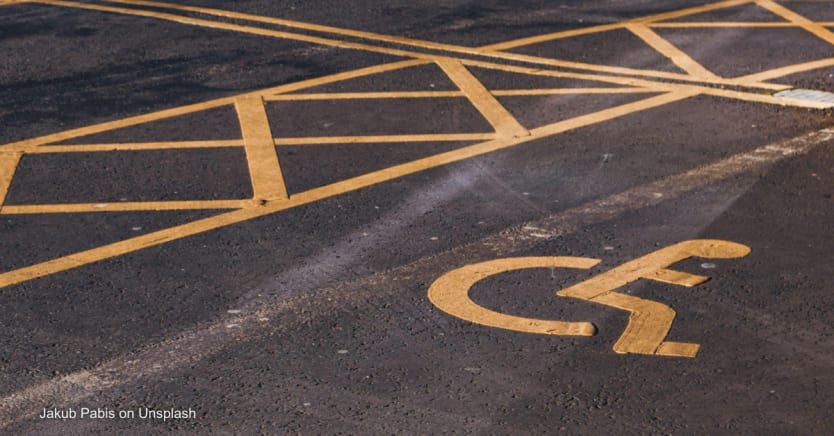
While disability data collection methods have evolved in recent years, with more countries committing to using quality measures such as the Washington Group Questions, globally the picture of disability inclusion is still unclear.
Although we’ve increasingly been able to gain an insight into some of the barriers people with disabilities are facing worldwide, there are still too many “missing voices” in the fight for equality. And as a recent publication by UNICEF says, “when not represented in official statistics, children and adults with disabilities remain politically and socially ‘invisible.’”
The 2030 Sustainable Development Goals have requirements for countries to disaggregate data by disability. Yet so often the data collected is low in quality and doesn’t reflect the daily challenges faced by people with disabilities. And without being able to disaggregate effectively, we can’t get an accurate understanding of the varying intersectional barriers for people with disabilities based on factors such as age, gender, or economic background.
To be sure, the data landscape has certainly improved in recent years — especially with the adoption of the United Nations Convention on the Rights of Persons with Disabilities, and with global commitments to the SDGs.
The Global Disability Summit offers an important accountability mechanism to help ensure organizations are following through with their commitments. But we need to go further if we really want to offer up “inclusive evidence” when advocating for change.
Take climate change for example. Climate change is a key global focus — and rightly so. But how often are people with disabilities mentioned within this conversation? In reality, people with disabilities are more likely to be disadvantaged by climate change.
Climate change is having the largest impact on the world’s poorest and most marginalized. And within this group, an estimated 20% are people with disabilities. So surely climate responses must be disability-inclusive? Unfortunately, that’s not always the case, and often people with disabilities are left out of the conversation.
As extreme weather events become increasingly regular, the impacts of such exclusion are apparent. We discovered as much in our organization’s recent research on Bangladesh, where we hoped to take a closer look at whether disaster preparedness messaging was adequately reaching the aging population, as well as people with disabilities, many of whom live in more rural communities.
We found that existing approaches aren’t generally inclusive enough. Some messaging was prominent on social media, yet not everyone has access to these channels or uses them on a regular basis. And, worryingly, our review found that in some areas people weren’t aware of crucial information such as where their local flood shelter was located.
By improving data collection methods we can help break this “cycle of invisibility” [of people with disabilities].
—We need crisis communications to connect with vulnerable people and people with disabilities. But how can we do that if we don’t really know anything about that audience?
If we’re able to access good quality data that can be disaggregated by factors such as type of disability and age, then we can look further into what messaging channels these groups are using the most and plan climate communications effectively.
But to really get a rich, inclusive understanding, people with disabilities and elderly people must be consulted throughout that entire process. From evidence gathering to dissemination of information back to wider communities. people with disabilities and elderly people are rights-holders and should be treated as such. Without their meaningful participation, climate response planning and disaster messaging could fall short of their vital purpose.
This week, organizations will no doubt make urgent new commitments around tackling global challenges such as climate change at the Global Disability Summit. It is critical that such commitments include working with organizations of persons with disabilities to actually gather data to help track these changes.
Similar can be said for other intersectional factors, such as gender inequalities for women with disabilities and how climate change is impacting their access to health services. MSI Reproductive Choices has recently called for the integration of sexual reproductive health and rights in the climate response. Their research has shown that things such as flooding and unprecedented heat waves are actually preventing some women from traveling to health services.
MSI has said that since 2011, 11.5 million women in the 26 countries where it operates have had their access to contraceptives disrupted due to climate change. But what is the scale of the problem for women with disabilities?
A lack of clear-cut disability data in these areas means we’re not yet able to accurately measure this impact on disabled women with disabilities — who are likely to be more affected than their peers.
While we have been able to gain a greater understanding of how women with disabilities access SRH services in some sub-Saharan countries through our work on the Women’s Integrated Sexual Health program, the gaps in knowledge are still vast. And it’s women with disabilities who are going to be left out of the conversation when it comes to climate responses if we don’t begin to fill those gaps.
As we head into the Global Disability Summit, we’re looking forward to conversations around disability gaps and how they can be addressed within wider commitments. Such discussions must be central to any development work if we’re really going to understand impact and progress toward the SDGs. By improving data collection methods we can help break this “cycle of invisibility.”








